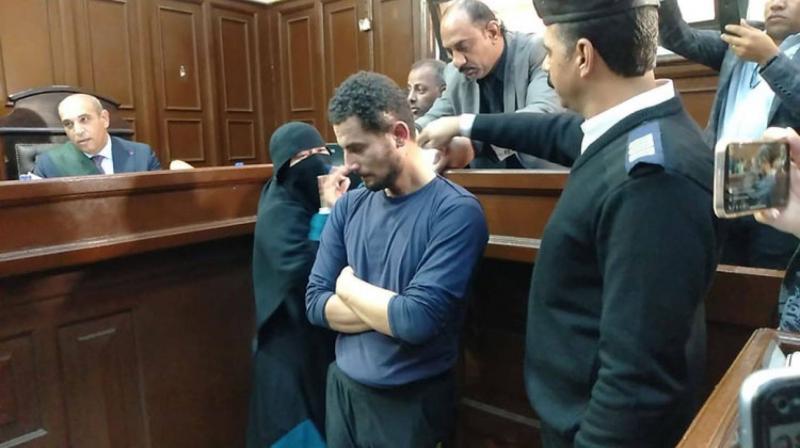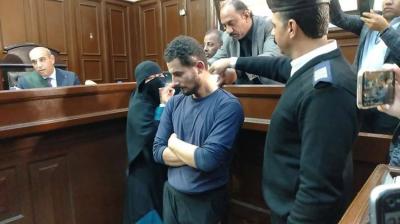Today, the second session of the trial for the Ismailia killer took place, a case that has shaken Egyptian society in recent days after he ended the life of a person, severing their head from their body on Al-Bahari street specifically on November 2nd, in front of passersby in a shocking scene captured by mobile cameras and widely circulated. The Egyptian public prosecutor ordered the referral of the defendant, accused of deliberately killing another person in Ismailia and attempting to kill two others, to the competent criminal court for an expedited trial; to punish him for the charges against him, including drug use and possession of bladed weapons – without legal justification – in a public gathering in order to disturb public order, according to Akhbar Al-Youm.
The public prosecution presented evidence against the defendant from the testimonies of the two injured parties and ten other witnesses, as well as footage of the crime and the identification of the defendant, in addition to his detailed confession of committing the alleged crimes. The forensic report confirmed the possible occurrence of the incident as described in the investigations, including drug analysis results showing the presence of narcotics previously acknowledged by the defendant and specifying their type during investigations.
The defendant stated that he "encountered the victim in the street and asked him about a hair iron" that he had given him to fix due to a malfunction. The victim replied that it was at the workshop, but conditioned that they engage in immoral acts as they had done six years prior, or else he would expose him. In a moment of rage, he bought a knife and stabbed the victim in the neck in the street.
The defendant added in the prosecutor's investigations that he "continued to stab the victim in various parts of his body until he became a lifeless body, then severed his head and walked around with it on Tanta street, took out a black bag to put the head in and drew a gun to scare off bystanders until no one would approach him, but eventually, people managed to apprehend him, followed by the police."
He revealed that he used to engage in immoral acts with the victim years ago, but this had only happened a few times, particularly during holidays in the victim's workshop. When he requested to repeat the act, he became enraged and felt compelled to eliminate him.
The forensic psychiatry department of the regional mental health council reported on the case assigned to them by the public prosecutor to examine the defendant in the Ismailia massacre case. The report confirmed that the defendant displayed no symptoms indicating psychological or mental disturbances that could impair his perception, choice, will, or ability to distinguish right from wrong, both at the present time and at the time of the alleged incident, making him responsible for the charges against him.
Due to conflicting statements at the beginning of the incident, the identity of the defendant and the victim, a 42-year-old day worker involved in various trades, was established. It was revealed that he was on his way to buy bread as usual when he encountered the defendant, who assaulted him. The victim had no relationship with the defendant, and it was denied that the incident was motivated by honor since the defendant was unmarried. It was found that the defendant was a fish seller and a drug addict, having previously been admitted to rehabilitation centers for addiction.
It was also established that the victim was a father, a freelancer, and the provider for seven children of different ages, known for his good reputation, as confirmed by all his relatives and neighbors, who called for the defendant to be hanged in a public square for retribution.




